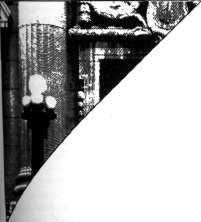 |
Home | Search | Browse | About IPO | Staff | Links |
 |
Home | Search | Browse | About IPO | Staff | Links |
|
Judicial Rulings  Illinois Supreme Court Common law claims for punitive damages die with the claimant PUNITIVE DAMAGES remain a volatile issue in the wake of the Illinois Supreme Court's refusal to erase any distinction between common law and statutory claims without authorization by the Illinois General Assembly. In an October 21 finding, the high court ruled that common law claims for punitive damages, unlike statutory claims, generally can not survive the death of the claimant solely on the basis of the Illinois Survival Act. The latest finding in three consolidated cases reiterates earlier findings in a 1975 case, Matttyasovszky v. West Towns Bus Co., and a 1978 case, National Bank v. Norfolk & Western Ry. Co., findings the high court insists it is powerless to change. Writing for the court, Justice Seymour Simon said, "In urging that we overrule Mattyasovszky the plaintiffs ask that we consider the often repeated adage that it is cheaper to kill your victim than to leave him maimed, and the possibility that defendants faced with punitive damage claims may attempt to delay the proceedings until the plaintiffs who advance them die. Persuasive as these arguments sound, we believe they are better addressed to the General Assembly than to this court in view of the legislature's earlier expression of its view in the matter in the Survival Act and this court's interpretation of that act in Mattyasovsky. "In each of the three consolidated cases (Beatrice Froud v. The Celotex Corporation, Rita Williamson v. The Celotex Corporation, and Shirley Friday v. The Celotex Corporation), the administrator of the estate continued to push for punitive damages after the claimant died of asbestosis, alleging the original injury and subsequent death were work-related. The Cook County Circuit Court had dismissed the claims, but the First District Appellate Court had reversed that finding. The high court agreed with the circuit court. Celotex argued the high court had answered the question of survival of claims in Matiyasovszky, when it ruled that common law claims die when claimants die, due to the common law doctrine of abatement. The Froud, Williamson and Friday administrators asking for a reversal of Matiyasovszky, argued that since the high court had allowed statutory punitive damages to survive in National Bank, then it should allow common law punitive damage claims to survive also. Not so, Simon said. Mattyasovszky and National Bank are "reconcilable," since the former is a "judicial pronouncement of a common law doctrine," while the latter is a "judicial construction of a statute." Simon clarified the law: "The Survival Act shields from abatement only those claims which are specifically set forth in it; which claims abate and which survive is the result of legislative judgment to which this court is not free . . . [to] provide exceptions, limitations or conditions which are different than the plain meaning of the statute." He pointed out that in 1975 legislators considered, but rejected, a bill that would have specifically included claims for punitive damages among those shielded by the Survival Act. Diane Ross Presumption of loss supports $125,000 verdict for death of fetus PARENTS proving malpractice in the death of a viable fetus will now be able to collect substantial pecuniary damages from doctors. In a split decision October 21, the Illinois Supreme Court found that presumption of loss — without evidence of loss — will support a verdict of pecuniary damages for the wrongful death of an infant or viable fetus. The court upheld a $125,000 verdict in the case of Terri L. Jones v. Richard W. Karraker, in which Jones had sued Karraker for malpractice when the child she was carrying died. On the main issue of whether evidence of loss is necessary to support a verdict of pecuniary damages, Justice Joseph H. Goldenhersh speaking for the majority, said: "It is true that in many opinions involving verdicts for the wrongful death of minor children, the evidence of the child's health, abilities, disposition and other accomplishments has been discussed, but in none of these opinions was it held that such evidence is required to sustain a verdict." Such evidence, "which defendant contends was essential is of questionable value in assessing damages for the death of a baby," Goldenhersh said. Responding to the defendant's suggestion that the high court limit the verdict for the wrongful death of a viable fetus to $20,000, Goldenhersh said that this is a legislative prerogative. He noted that the General Assembly has removed limitations set in the past on the amount of damages that can be asked in wrongful death cases. The high court also refused to award a new trial or change the amount awarded by the jury. Goldenhersh cited Lau v. West Towns Bus Co. in which the high court has said: ". . . although the verdict may well be in excess of the amount which judges of this court would have allowed, if they had heard the evidence and made the original determination, yet we do not believe that this is so excessive as to show passion or prejudice." In a strongly worded dissent Justice Seymour Simon and Chief Justice Howard C. Ryan warned that allowing presumption alone to support pecuniary damages will set a dangerous precedent. They said the $125,000 verdict at issue was "far beyond" a child's pecuniary value to its parents. Referring to Chrisafogeoris v. Brandenberg, the 1973 case that established wrongful death of a viable fetus, Simon and Ryan reminded their colleagues that the high court had split its decision precisely over the question of how to assess such damages. January 1984/Illinois Issues/41
|